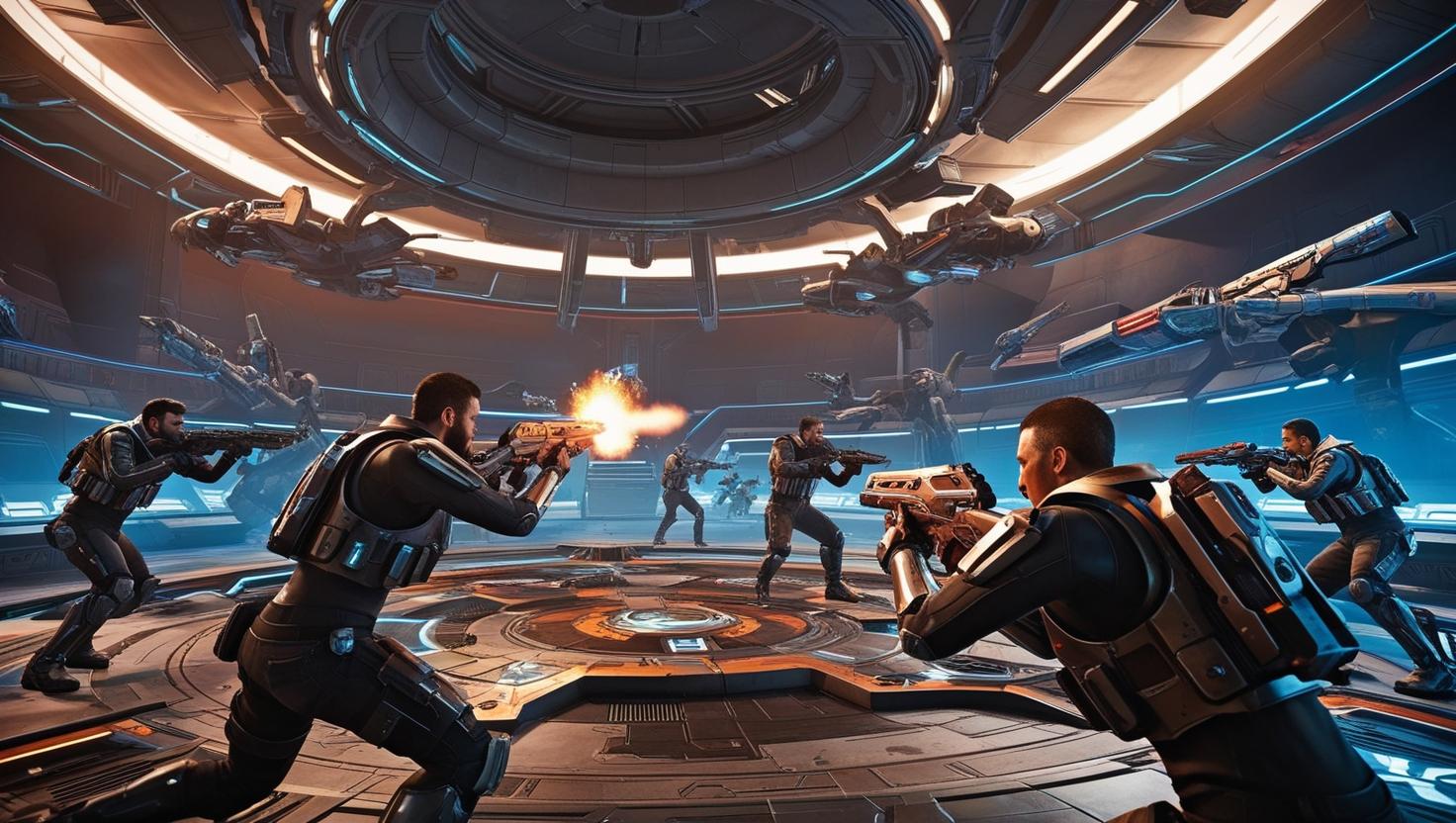Understanding Player Behavior and Motivation: A Developer’s Guide to Gamer Profiles
As game developers, understanding what makes our Player Behavior and Motivation isn’t just helpful—it’s essential. When we grasp the underlying motivations that drive different types of players, we can create experiences that resonate more deeply and keep players coming back for more.
Why Player Motivation Matters
Let’s face it: players are complex. Each person who picks up your game brings their own set of expectations, preferences, and playing styles. The better you understand these patterns, the more effectively you can:
- Create content that satisfies your core audience
- Design mechanics that appeal to multiple player types
- Balance gameplay to accommodate different play styles
- Develop targeted features that address specific motivational needs
The data backs this up: Games designed with specific player motivations in mind show up to 87% higher retention rates in the first 30 days compared to those with a one-size-fits-all approach.
The Major Player Motivation Frameworks
Before diving into specific profiles, it’s worth noting there are several well-established frameworks for understanding player motivation. While we’ll focus primarily on the most practical applications for developers, being familiar with these models provides valuable context.
Bartle’s Taxonomy: The Classic Framework
Richard Bartle’s player types remain one of the most referenced frameworks in game design. Even though it was originally created for MUDs (Multi-User Dungeons) in 1996, it continues to provide valuable insights.
The four primary Bartle types are:
- Achievers (Diamonds) – Want to level up, earn points, and collect everything
- Explorers (Spades) – Desire to discover everything about your game world
- Socializers (Hearts) – Play primarily to interact with other players
- Killers (Clubs) – Thrive on competition and imposing themselves on others
Quick stat: Research suggests that across most games, the distribution tends to be roughly 40% Socializers, 30% Achievers, 20% Explorers, and 10% Killers—though this varies dramatically by genre.
Quantic Foundry’s Motivation Model: The Modern Approach
For a more nuanced and research-based framework, Quantic Foundry’s model breaks player motivation into six primary categories:
- Action – Excitement and destruction
- Social – Competition and cooperation
- Mastery – Challenge and strategy
- Achievement – Completion and power
- Immersion – Fantasy and story
- Creativity – Design and discovery
What makes this model particularly useful is that it recognizes players aren’t just one type—they have motivational profiles with varying degrees of interest across these categories.
The Main Gamer Profiles You Should Know
Now let’s break down the most common player profiles you’ll encounter and how to design for them:
The Completionist
Core motivation: Achieving 100% completion and collecting everything possible.
Behavioral traits:
- Methodically works through all available content
- Highly responsive to achievement systems
- Often consulted wikis, guides, and community resources
- Values organization and tracking mechanisms
How to design for them:
- Implement robust achievement systems with clear tracking
- Create collectibles with meaningful rewards
- Include completion percentages for areas/activities
- Offer “new game+” or additional challenges after main completion
Development priority: High-value targets for retention, as they’ll explore your entire game if properly motivated.
The Competitor
Core motivation: Proving skill and dominance, often through PvP or leaderboards.
Behavioral traits:
- Focuses on mechanics that allow skill expression
- Highly engaged with ranking systems
- Often participates in community discussions about meta and strategy
- Values fairness and balanced gameplay above all
How to design for them:
- Implement skill-based matchmaking
- Create transparent ranking systems
- Offer competitive seasons with rewards
- Ensure mechanical depth that rewards practice
Data point: Games with robust competitive systems see 2.3x higher session frequency among this player type.
The Social Butterfly
Core motivation: Connection and shared experiences with others.
Behavioral traits:
- Prioritizes features that enable interaction
- Often acts as community builders and connectors
- Values cosmetic and expressive options
- Tends to be more tolerant of flaws if social features work well
How to design for them:
- Create robust guild/clan/team systems
- Implement meaningful cooperative gameplay
- Design spaces for non-gameplay social interaction
- Develop emotes, social gestures, and communication tools
Interesting fact: Social players spend 60% more on cosmetic items than non-social players across most game genres.
The Story Seeker
Core motivation: Immersion in narrative and character development.
Behavioral traits:
- Takes time to explore dialogue options and side quests
- Highly responsive to narrative choices and consequences
- Often engages with lore outside the game (books, videos, etc.)
- Values emotional connection to characters
How to design for them:
- Create branching narratives with meaningful player agency
- Develop complex, evolving characters
- Hide story elements throughout the game world
- Consider environmental storytelling techniques
Industry insight: Games with strong narrative elements show 34% higher completion rates than those focused solely on mechanics.
The Innovator
Core motivation: Creative expression and novel gameplay experiences.
Behavioral traits:
- Pushes the boundaries of intended gameplay
- Actively creates content when tools are available
- Often discovers unintended mechanics or approaches
- Values systems with emergent possibilities
How to design for them:
- Implement robust creation tools when possible
- Design systems with intentional emergent gameplay
- Create sandbox elements even in structured games
- Support modding where technically feasible
Developer tip: This player type often becomes your most valuable community contributor, creating content that extends your game’s lifespan.
The Optimizer
Core motivation: Finding the most efficient or powerful strategies.
Behavioral traits:
- Deeply studies game systems and mechanics
- Actively seeks “meta” information
- Often creates spreadsheets or uses external tools
- Values transparency in game mechanics
How to design for them:
- Provide detailed stats and information
- Create multiple viable strategies rather than one dominant path
- Implement regular balance changes to keep the meta fresh
- Design systems with meaningful trade-offs
Data insight: Optimizers spend 40% more time in forums and community discussions than other player types.
How to Apply These Profiles in Development
Understanding these profiles is just the first step. Here’s how to actually use this knowledge in your development process:
1. Identify Your Primary and Secondary Targets
Not every game needs to appeal to every player type. Based on your game concept and strengths, identify:
- 1-2 primary player profiles your game will excellently serve
- 1-2 secondary profiles you’ll adequately accommodate
- Profiles you’re comfortable not specifically designing for
Development reality check: Trying to appeal equally to all player types usually results in a game that doesn’t fully satisfy any of them.
2. Build Player Journeys For Each Profile
For your primary and secondary target profiles, map out:
- Their first hour experience
- Mid-game engagement hooks
- Long-term retention mechanics
- Social sharing or expansion opportunities
3. Balance Competing Needs
When player types have conflicting needs (e.g., Competitors wanting balanced environments vs. Innovators wanting creative freedom), consider:
- Separate gameplay modes
- Toggle-able features
- Progressive unlocking of different play styles
- Clear communication about intended experiences
4. Implement Analytics That Track Motivation
Design your telemetry to identify not just what players do, but why they might be doing it:
- Track pathways through content (linear vs. exploratory)
- Measure social feature engagement
- Monitor completion rates of optional content
- Analyze play session patterns and focus areas
Key metric: Time spent in different game systems often reveals motivational priorities better than direct surveys.
Common Pitfalls in Designing for Player Motivation
Even with the best intentions, there are several common mistakes developers make:
- Motivation mismatch: Marketing to one player type but delivering gameplay for another
- False expectations: Promising depth in areas that are actually shallow
- Unbalanced rewards: Overrewarding one motivation type while neglecting others
- System conflicts: Creating mechanics that force players to engage with motivations they don’t share
- Progression barriers: Requiring players to engage with non-preferred play styles to progress
Evolving Motivations
Remember that player motivations aren’t static – they evolve over time based on:
- Familiarity with your game systems
- Community influence and trends
- Updates and new content
- External factors (available time, competing games)
The most successful games recognize this evolution and provide different motivational hooks throughout the player lifecycle.
Conclusion
Understanding player behavior and motivation isn’t about putting people in rigid boxes—it’s about recognizing patterns that help us create more engaging experiences. By identifying the core drives behind different play styles, you can make informed design decisions that satisfy your target audience while still creating a cohesive game.
The most important takeaway? Listen to your players, but watch what they do even more carefully. Actions reveal true motivations far more reliably than words. By combining motivational theory with careful observation of actual player behavior, you’ll be well-equipped to create games that truly resonate.


Leave a Reply